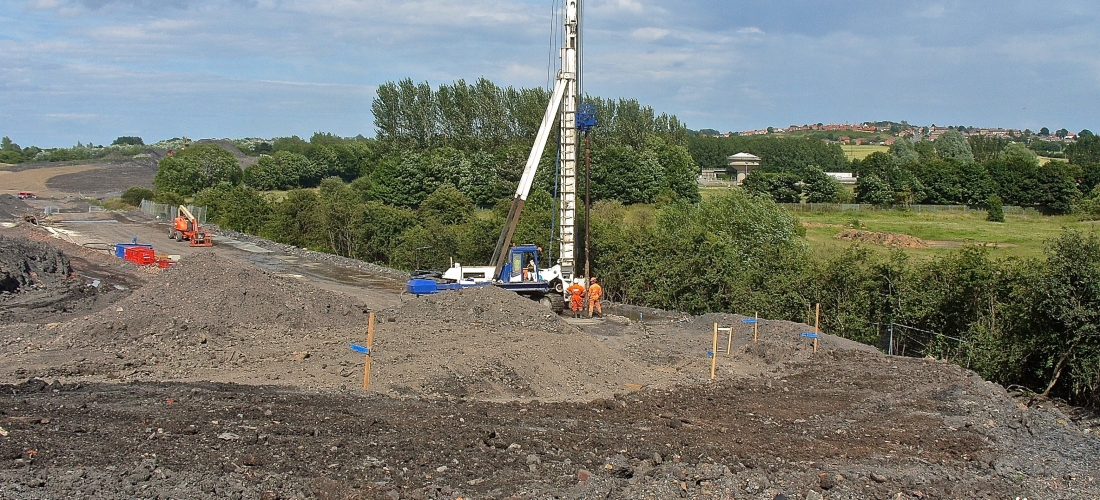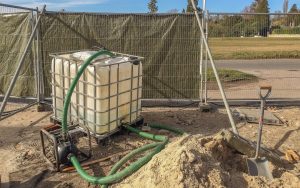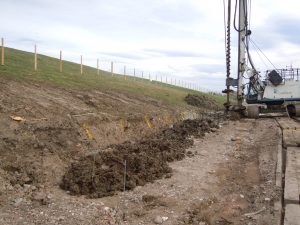
Client – Homes and Community Agency
Principal Contractor – Carillion Civil Engineering
Consulting Engineer – AECOM
Location – Lambton
Contract Value – £400K
The Lambton site historically operated as a colliery, cokeworks, firebrick works as well as a gas storage and purification facility. Located in Tyne and Wear, the site covers an approximate area of 65 hectares.
Ammonium was identified in groundwater at concentrations requiring remedial action. Commissioned by Carillion PLC (on behalf of a regional development agency), Ash Remediation Management addressed this issue through the installation of an in-situ water treatment barrier. The objective of the system was to mitigate the risk of ongoing migration of ammonium contaminated water to a nearby watercourse ( The Herrington Bern) by severing the pollution linkage pathway.
Ash Remediation Management acquired Environment Agency approval of the remedial scheme and the installation commenced in June 2009. The six week programme entailed the installation of relatively impermeable (270m) and relatively permeable sections (200m) of barrier and was completed 2 weeks ahead of schedule and within budget.
The barrier system was installed using a piling rig equipped with a soil mixing drill head, which is designed to reduce the amount of spoil produced. As the drilling head progresses the treatment slurry is injected via ports located within. Once the desired drilling depth has been achieved the withdrawal process of continued auger rotation further facilitating homogenisation of the soil mixed column commences. A high level of quality control was acvhieved by maximising the use of the rigs on board computer which measured numerous drilling parameters.
In order to assess the efficacy of the barrier system, a long term monitoring regime was drawn up and submitted to the Environment Agency. With the ultimate objective to monitor the quality of water migrating through the barrier, 4 No. wells were installed downstream of the relatively permeable barrier sections. Additionally, 3 No. wells were installed upstream in close proximity to the relatively permeable sections to illustrate the quality of water impacting upon the barrier. Two further wells were installed upstream at distance from the system to provide some data on background water quality. The monitoring period has now ended and the final laboratory results have proved the system has been a success.



